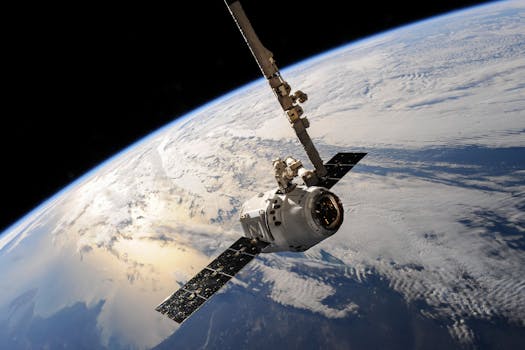
The Future of Satellites: Revolutionizing Global Connectivity
The future of satellites is poised to revolutionize global connectivity, enabling faster and more reliable communication, navigation, and remote sensing. With advancements in space technology, satellites are becoming increasingly important for a wide range of applications, from telecommunications and navigation to weather forecasting and earth observation.
As we look to the future, it’s clear that satellites will play a vital role in shaping the world of tomorrow. From the development of new satellite constellations to the use of advanced materials and propulsion systems, the possibilities for satellite technology are endless. In this article, we’ll explore the future of satellites and what it holds for global connectivity.
Advancements in Satellite Technology
One of the most significant advancements in satellite technology is the development of new satellite constellations. These constellations, which consist of hundreds or even thousands of small satellites, are designed to provide global coverage and enable faster and more reliable communication. Companies such as SpaceX, OneWeb, and Amazon’s Kuiper Systems are leading the charge in this area, with plans to launch thousands of satellites into low-Earth orbit over the next few years.
In addition to new satellite constellations, advancements in materials and propulsion systems are also transforming the satellite industry. For example, the use of advanced materials such as carbon fiber and aluminum is enabling the development of lighter and more efficient satellites. Similarly, the use of electric propulsion systems is allowing satellites to operate for longer periods of time and to travel farther distances.
Applications of Satellite Technology
Satellite technology has a wide range of applications, from telecommunications and navigation to weather forecasting and earth observation. In the area of telecommunications, satellites are used to provide internet access, telephone services, and television broadcasting to remote and underserved communities. They are also used for navigation, providing location information and timing signals for GPS and other satellite navigation systems.
In the area of weather forecasting, satellites are used to monitor weather patterns and provide early warnings for severe weather events such as hurricanes and tsunamis. They are also used for earth observation, providing data on climate change, deforestation, and other environmental trends. Additionally, satellites are used for remote sensing, enabling the monitoring of crop health, soil moisture, and other agricultural trends.
Challenges and Opportunities
Despite the many advancements in satellite technology, there are still several challenges that need to be addressed. One of the biggest challenges is the issue of space debris, which poses a significant threat to the safety and sustainability of satellite operations. Another challenge is the need for more efficient and effective launch systems, which are necessary to reduce the cost and increase the frequency of satellite launches.
However, these challenges also present opportunities for innovation and growth. For example, the development of new technologies such as satellite servicing and debris removal could provide new business opportunities and help to sustain the long-term health of the satellite industry. Similarly, the use of advanced materials and propulsion systems could enable the development of more efficient and sustainable launch systems.
Conclusion
In conclusion, the future of satellites is bright and full of possibilities. With advancements in space technology, new satellite constellations, and a wide range of applications, satellites are poised to play an increasingly important role in shaping the world of tomorrow. However, there are also challenges that need to be addressed, such as the issue of space debris and the need for more efficient launch systems. By working together to address these challenges, we can unlock the full potential of satellite technology and create a more connected, sustainable, and prosperous world for all.






